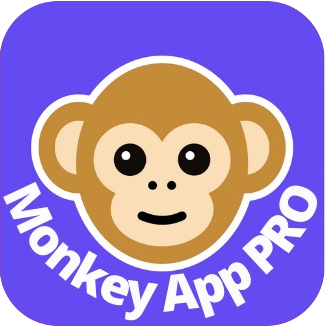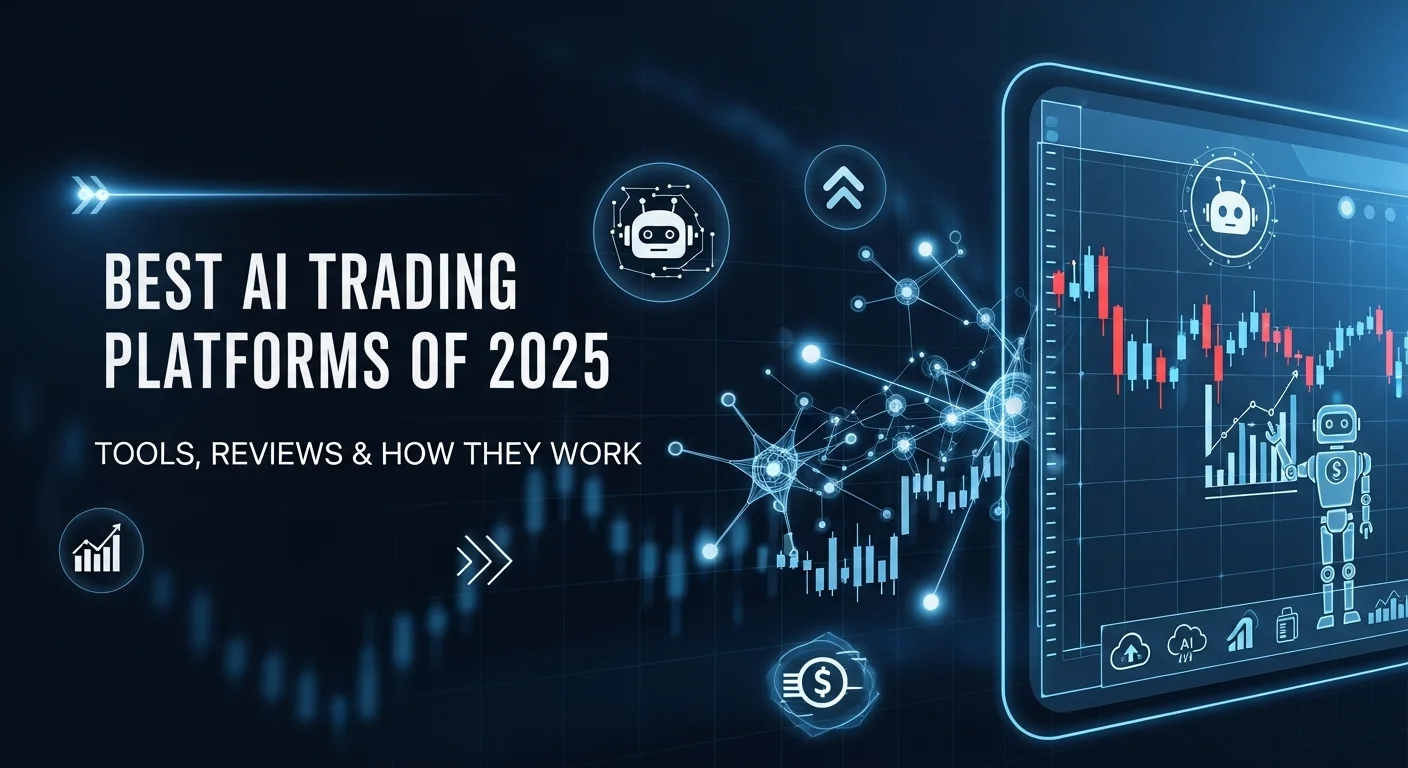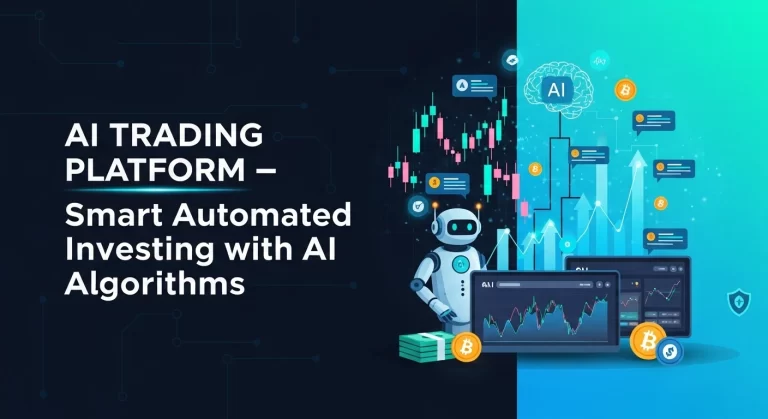Best AI Trading Platforms of 2025: Tools, Reviews & How They Work
The financial markets move at lightning speed, processing millions of data points every second. While human traders struggle to keep up with this constant flow of information, artificial intelligence has emerged as a game-changing solution. An AI trading platform harnesses the power of machine learning and advanced algorithms to analyze market data, identify patterns, and execute trades with precision that far exceeds human capabilities.
Whether you’re a beginner looking to automate your investment strategy or an experienced trader seeking an edge in today’s competitive markets, understanding AI trading platforms has become essential. This comprehensive guide will walk you through everything you need to know about these revolutionary tools, from how they work to which platforms offer the best features for your specific needs.
What is an AI Trading Platform?
An AI trading platform is a sophisticated software system that uses artificial intelligence, machine learning algorithms, and big data analytics to automate trading decisions and execute trades across various financial markets. These platforms analyze vast amounts of market data, news sentiment, technical indicators, and historical patterns to generate trading signals and make investment decisions without human intervention.
At its core, an AI trading platform combines several key technologies:
Machine Learning Algorithms:
These systems learn from historical market data to identify patterns and predict future price movements. Unlike traditional technical analysis, machine learning models can process thousands of variables simultaneously and adapt to changing market conditions.
Natural Language Processing (NLP)
Advanced AI platforms analyze news articles, social media sentiment, earnings reports, and other text-based data to gauge market sentiment and predict how events might impact asset prices.
Automated Execution:
Once the AI identifies a trading opportunity, the platform can automatically execute buy or sell orders through connected brokers, eliminating the delay and emotional bias that often affects human traders.
Real-Time Data Processing:
AI trading platforms continuously monitor market conditions, processing streaming data from multiple sources to identify opportunities as they emerge.
How AI is Changing the Way We Trade
Role of Machine Learning and Big Data
Machine learning has revolutionized trading by enabling systems to process and analyze data at a scale impossible for human traders. Modern AI trading platforms can simultaneously analyze price movements, volume patterns, news sentiment, economic indicators, and even satellite imagery to make informed trading decisions.
Big data plays a crucial role in this transformation. Where traditional traders might focus on a handful of technical indicators, AI systems can process thousands of data points including social media sentiment, earnings call transcripts, weather patterns affecting commodities, and global economic indicators. This comprehensive analysis often reveals trading opportunities that would be invisible to human traders.
The learning aspect is equally important. Unlike static trading rules, machine learning models continuously evolve and improve their accuracy as they process more data. They can identify subtle patterns that emerge over time and adapt their strategies to changing market conditions.
Real-Time Decisions vs Human Emotions
One of the most significant advantages of AI trading platforms is their ability to make objective, emotion-free decisions in real-time. Human traders often fall victim to psychological biases like fear of missing out (FOMO), loss aversion, and confirmation bias. These emotions can lead to poor timing, overtrading, and holding losing positions too long.
AI systems operate without these emotional constraints. They can execute trades based purely on data-driven analysis, maintaining discipline even during volatile market conditions. When a pre-programmed condition is met, the AI executes the trade immediately, without hesitation or second-guessing.
This speed advantage is particularly crucial in today’s markets. AI platforms can identify and act on opportunities in milliseconds, while human traders might take minutes or hours to analyze the same information and make a decision.
Common Applications in Stocks, Crypto, and Forex
AI trading platforms have found applications across all major financial markets:
- Stock Trading: AI excels at analyzing earnings reports, SEC filings, analyst ratings, and news sentiment to predict stock price movements. Some platforms specialize in momentum trading, while others focus on value investing or pairs trading strategies.
- Cryptocurrency Trading: The 24/7 nature of crypto markets makes them ideal for AI trading. These platforms can monitor hundreds of cryptocurrencies simultaneously, identifying arbitrage opportunities, trend reversals, and sentiment shifts across multiple exchanges.
- Forex Trading: Currency markets benefit from AI’s ability to process economic data, central bank communications, and geopolitical events that influence exchange rates. AI platforms can trade major and exotic currency pairs while managing risk across multiple positions.
Top 7 AI Trading Platforms in 2025 (Ranked & Reviewed)
Trade Ideas
Trade Ideas stands out as one of the most comprehensive AI trading platforms available, offering powerful stock screening and backtesting capabilities powered by their proprietary Holly AI system.
Key Features:
- Real-time stock scanning with customizable filters
- AI-powered trade ideas and alerts
- Advanced backtesting and paper trading
- Social sentiment analysis
- Automated trading through broker integration
Ideal User: Active day traders and swing traders who want AI-generated stock ideas with detailed backtesting capabilities.
Pros:
- Extensive screening capabilities
- Strong backtesting features
- Real-time alerts and notifications
- Comprehensive educational resources
Cons:
- Higher learning curve for beginners
- Premium features require expensive subscriptions
- Limited to stock markets
Pricing: Plans start at $84/month for basic features, with professional plans reaching $228/month.
TrendSpider
TrendSpider combines AI-powered technical analysis with automated strategy testing, making it popular among traders who rely heavily on chart patterns and technical indicators.
Key Features:
- Automated trendline and pattern recognition
- Multi-timeframe analysis
- Strategy backtesting and optimization
- Price alerts and scanner
- Integration with multiple brokers
Ideal User: Technical traders who want AI assistance in identifying chart patterns and optimizing trading strategies.
Pros:
- Excellent pattern recognition capabilities
- User-friendly interface
- Strong backtesting features
- Multiple timeframe analysis
Cons:
- Focuses primarily on technical analysis
- Limited fundamental analysis features
- Subscription-based pricing only
Pricing: Plans range from $39/month to $168/month, with a 7-day free trial available.
Tickeron
Tickeron offers AI-powered stock and crypto predictions with a focus on pattern recognition and trend analysis, making it accessible to both beginners and experienced traders.
Key Features:
- AI pattern recognition and predictions
- Portfolio optimization tools
- Real-time alerts and screeners
- Cryptocurrency analysis
- Educational resources and tutorials
Ideal User: Beginner to intermediate traders looking for AI guidance in stock and crypto investing.
Pros:
- User-friendly interface
- Covers both stocks and cryptocurrencies
- Good educational content
- Affordable pricing options
Cons:
- Predictions may not always be accurate
- Limited advanced features
- Smaller community compared to larger platforms
Pricing: Basic plans start at $19/month, with premium features available for $39/month.
Kavout
Kavout uses machine learning to analyze over 200 factors for each stock, providing K-Score ratings that help investors identify potential opportunities and risks.
Key Features:
- Proprietary K-Score rating system
- Multi-factor analysis using AI
- Portfolio optimization tools
- Risk assessment and alerts
- Integration with popular brokers
Ideal User: Long-term investors who want AI-powered stock ratings and portfolio optimization.
Pros:
- Comprehensive factor analysis
- Easy-to-understand scoring system
- Good for portfolio diversification
- Reasonable pricing
Cons:
- Limited to stock markets
- Less suitable for day trading
- Fewer advanced features compared to competitors
Pricing: Plans start at $29/month with various feature tiers available.
Alpaca
Alpaca offers commission-free trading with robust API access, making it popular among developers and quantitative traders who want to build custom AI trading strategies.
Key Features:
- Commission-free stock and ETF trading
- Comprehensive API for algorithmic trading
- Paper trading environment
- Real-time and historical market data
- Integration with popular programming languages
Ideal User: Developers and quantitative traders who want to build custom AI trading algorithms.
Pros:
- No commission fees
- Excellent API documentation
- Strong developer community
- Good paper trading features
Cons:
- Requires programming knowledge
- Limited built-in AI features
- No options trading
- US markets only
Pricing: Free commission trading with API access, premium data packages available.
Quantum-X
Quantum-X represents a newer generation of AI trading platforms, leveraging quantum computing principles and advanced machine learning to analyze market patterns across multiple asset classes.
Key Features:
- Quantum-inspired algorithms for pattern recognition
- Multi-asset trading (stocks, crypto, forex)
- Advanced risk management tools
- Real-time sentiment analysis
- Automated portfolio rebalancing
Ideal User: Sophisticated traders and institutions looking for cutting-edge AI technology and multi-asset capabilities.
Pros:
- Advanced AI and quantum-inspired algorithms
- Multi-asset platform
- Strong risk management features
- Institutional-grade technology
Cons:
- Higher complexity and learning curve
- Premium pricing structure
- Newer platform with smaller user base
Pricing: Custom pricing based on account size and features, starting from $199/month for individual traders.
MetaTrader 5 with AI Plugins
While not exclusively an AI platform, MetaTrader 5 supports numerous AI trading robots (Expert Advisors) and has become a popular choice for forex and CFD traders seeking automated solutions.
Key Features:
- Extensive library of AI trading robots
- Custom indicator development
- Strategy testing and optimization
- Multi-asset trading capabilities
- Large community of developers
Ideal User: Forex and CFD traders who want access to a wide variety of AI trading robots and custom indicators.
Pros:
- Large selection of AI tools
- Strong backtesting capabilities
- Active developer community
- Multiple broker options
Cons:
- Quality varies among third-party AI tools
- Requires careful vetting of trading robots
- Complex interface for beginners
Pricing: Free platform, but AI robots and premium indicators may cost $20-$500+ each.
Comparison Table – AI Trading Platforms at a Glance
| Platform | Best For | Key Features | Price Range | Free Trial |
| Trade Ideas | Stock day trading | AI screening, Holly AI, backtesting | $84-$228/month | 15 days |
| TrendSpider | Technical analysis | Pattern recognition, multi-timeframe | $39-$168/month | 7 days |
| Tickeron | Beginner-friendly AI | Pattern predictions, portfolio tools | $19-$39/month | 14 days |
| Kavout | Long-term investing | K-Score ratings, risk assessment | $29+/month | 30 days |
| Alpaca | Developer/API trading | Commission-free, robust API | Free + data fees | Unlimited |
| Quantum-X | Advanced multi-asset | Quantum algorithms, risk management | $199+/month | 30 days |
| MetaTrader 5 | Forex/CFD trading | AI robots, custom indicators | Free + robot costs | Platform free |
Key Features to Look for in an AI Trading Platform
Backtesting and Strategy Builder
Backtesting capabilities are essential for evaluating how your AI trading strategies would have performed using historical data. Look for platforms that offer comprehensive backtesting with adjustable parameters, realistic commission and slippage modeling, and detailed performance reports.
A good strategy builder should allow you to customize AI parameters, set risk management rules, and test different market conditions. The best platforms provide both visual strategy builders for beginners and code-based options for advanced users.
AI Signal Generation & Alerts
The quality of AI-generated trading signals separates good platforms from great ones. Look for systems that provide clear entry and exit signals, confidence levels for each trade recommendation, and detailed explanations of why the AI chose specific trades.
Real-time alerts are crucial for active traders. The platform should offer customizable notifications via email, SMS, or mobile app, allowing you to act quickly on time-sensitive opportunities.
Automated Trade Execution
Seamless broker integration enables the AI to execute trades automatically based on your predefined criteria. This feature should include position sizing rules, stop-loss and take-profit settings, and the ability to manage multiple positions simultaneously.
Look for platforms that support multiple brokers and offer failsafe mechanisms to prevent technical issues from causing significant losses.
Sentiment Analysis
Advanced AI platforms incorporate sentiment analysis from news sources, social media, and analyst reports. This feature helps identify potential market-moving events before they fully impact prices.
The best sentiment analysis tools provide real-time updates, sector-specific insights, and historical sentiment data for backtesting purposes.
Broker/API Integration
Strong API integration ensures smooth data flow and trade execution. The platform should support popular brokers, provide reliable data feeds, and offer backup connections to prevent disruptions during critical trading periods.
Look for platforms that offer both paper trading and live trading options, allowing you to test strategies risk-free before committing real capital.
Who Should Use an AI Trading Platform?
Beginners
New traders can benefit from AI platforms that provide educational resources, simple interfaces, and guided investment strategies. These platforms can help beginners learn about market patterns and risk management while avoiding common emotional trading mistakes.
However, beginners should start with paper trading and thoroughly understand how the AI makes decisions before risking real money. Platforms like Tickeron and Kavout offer good starting points with their user-friendly interfaces and educational content.
Active Day Traders
Day traders benefit most from AI platforms that offer real-time scanning, rapid signal generation, and automated execution. The speed and objectivity of AI can provide significant advantages in fast-moving markets.
Platforms like Trade Ideas and TrendSpider excel in this area, offering sophisticated screening tools and pattern recognition capabilities that can identify opportunities across thousands of stocks simultaneously.
Long-Term Investors
Long-term investors can use AI platforms for portfolio optimization, risk assessment, and periodic rebalancing. These tools help identify undervalued stocks, optimize asset allocation, and maintain diversification across different market conditions.
Kavout’s K-Score system and similar fundamental analysis tools are particularly valuable for buy-and-hold investors who want AI assistance in stock selection and portfolio management.
Passive Investors
Even passive investors can benefit from AI platforms that offer automated rebalancing, tax-loss harvesting, and low-cost portfolio management. These tools can optimize long-term returns while minimizing the time and effort required for portfolio maintenance.
Pros and Cons of Using AI in Trading
Benefits of AI Trading:
- Emotion-Free Decision Making: AI systems don’t experience fear, greed, or other emotions that can lead to poor trading decisions
- Speed and Efficiency: AI can analyze vast amounts of data and execute trades in milliseconds
- 24/7 Market Monitoring: AI platforms can watch markets around the clock, never missing opportunities due to human limitations
- Pattern Recognition: Machine learning excels at identifying complex patterns that humans might overlook
- Backtesting Capabilities: AI strategies can be thoroughly tested on historical data before risking real capital
- Consistent Execution: AI follows predetermined rules without deviation, maintaining discipline during volatile periods
Limitations and Risks:
- No Guarantee of Profits: AI cannot predict the future with certainty, and past performance doesn’t guarantee future results
- Technology Risks: System failures, connectivity issues, or bugs can lead to significant losses
- Over-Optimization: AI strategies might be too finely tuned to historical data and fail in new market conditions
- Lack of Intuition: AI cannot account for unprecedented events or “black swan” scenarios that fall outside historical patterns
- High Costs: Premium AI trading platforms can be expensive, potentially eating into profits
- Reduced Learning: Over-reliance on AI might prevent traders from developing their own market understanding
How to Get Started with AI Trading
Choose a Platform Research different AI trading platforms based on your experience level, budget, and preferred markets. Consider starting with platforms that offer free trials to test their features and interface.
- Create a Demo Account Most platforms offer paper trading or demo accounts that let you test AI strategies with virtual money. Use this opportunity to understand how the AI makes decisions and evaluate its performance without financial risk.
- Set Goals and Risk Parameters Define your investment objectives, risk tolerance, and time horizon. Configure the AI platform’s risk management settings to align with your personal financial situation and goals.
- Start Small When you’re ready to trade with real money, start with a small account balance. This allows you to gain experience with the platform while limiting potential losses as you learn.
- Monitor, Adjust, and Learn Regularly review your AI trading performance and adjust parameters as needed. Continue learning about markets and AI trading concepts to make better decisions about platform settings and strategy selection.
Frequently Asked Questions (FAQs)
Final Thoughts
AI trading platforms represent a significant evolution in how individuals can participate in financial markets. They offer compelling advantages including emotion-free decision making, superior data processing capabilities, and the ability to monitor markets continuously. For many traders and investors, these benefits can lead to improved performance and more consistent results.
However, AI trading isn’t a magic solution that guarantees profits. Success still requires proper risk management, realistic expectations, and ongoing education about markets and technology. The most effective approach often combines AI efficiency with human judgment and oversight.
For beginners, AI platforms can provide valuable learning opportunities and help avoid common emotional mistakes. Start with user-friendly platforms like Tickeron or Kavout, use paper trading extensively, and focus on understanding how the AI makes decisions.
For experienced traders, advanced platforms like Trade Ideas, TrendSpider, or Quantum-X can enhance existing strategies and provide new analytical capabilities. These tools can help identify opportunities you might miss and execute strategies more consistently.
For long-term investors, AI platforms offer portfolio optimization and risk management tools that can improve returns while reducing the time spent on investment management. Focus on platforms that emphasize fundamental analysis and portfolio optimization rather than day trading features.
Before committing significant capital to any AI trading platform, take advantage of free trials and paper trading options. This allows you to evaluate the platform’s performance and ensure it aligns with your investment goals and risk tolerance. Remember that successful AI trading requires the same discipline and risk management principles as any other investment approach – the technology is a powerful tool, but it’s not a substitute for sound financial planning and realistic expectations.
The future of trading increasingly involves AI assistance, and those who learn to leverage these tools effectively while understanding their limitations will likely have significant advantages in tomorrow’s markets.

David Hannery shares simple, helpful tips about the Monkey App on monkeyapppro.com. From features to safety, every guide is written to make your app experience better.






